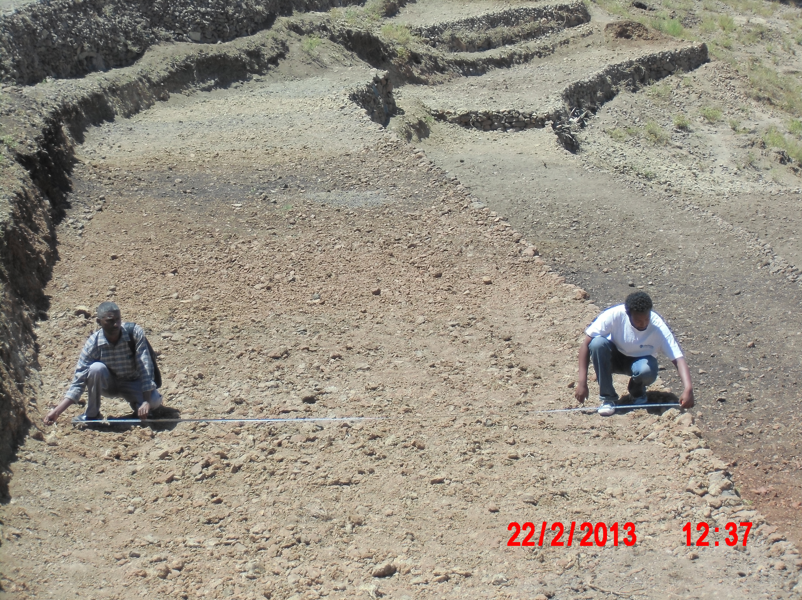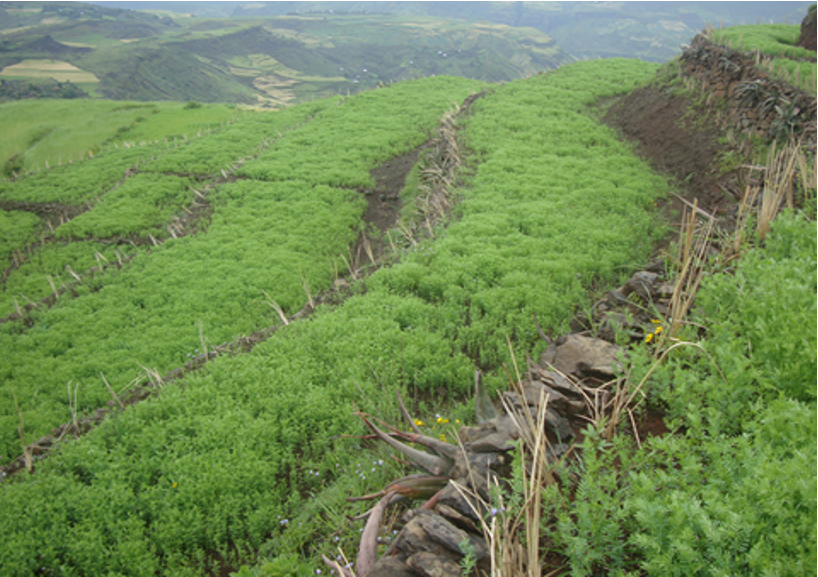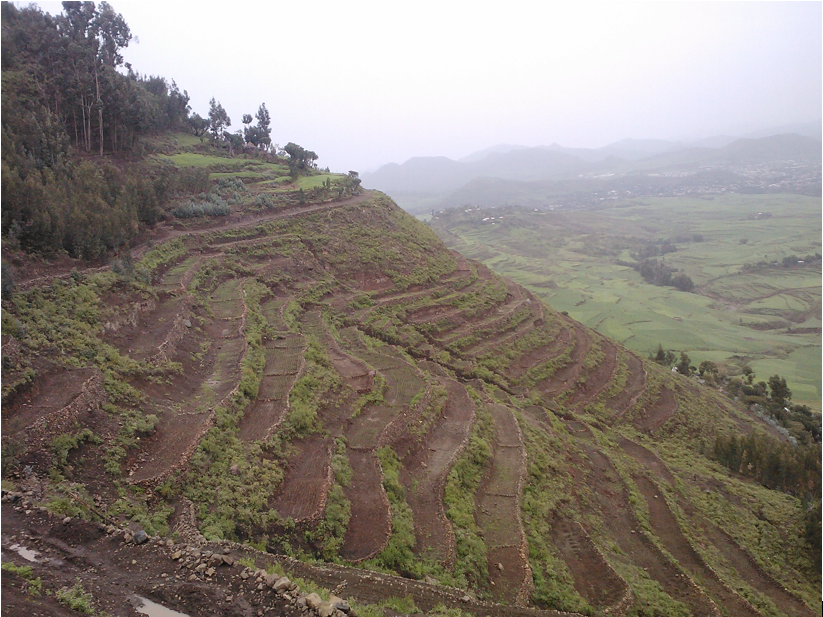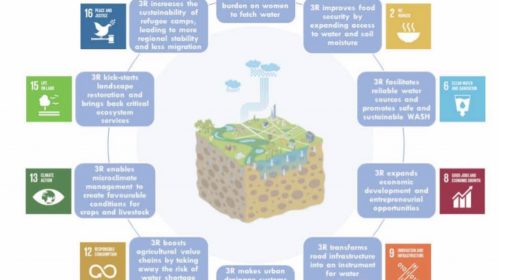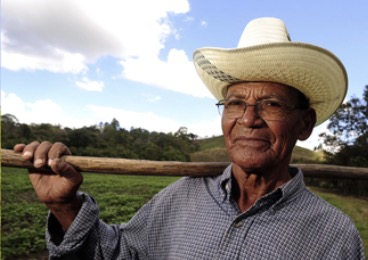By Abraham Mehari Haile, Eyasu Yazew Hagos and Frank van Steenbergen
July 2, 2015
Picture 1: Bench terraces (Own image)
The Tigray Regional Government (TRG) in Ethiopia has five years back embarked on pilot testing its policy and investment programme of converting the rehabilitated steep degraded hillsides into productive land through, among others, bench terracing (Picture 1). At the nucleus of the target beneficiaries are the estimated quarter of a million landless youth (about half are female) in the Region. There is a clear gender focus: in any investment intervention, 50% of the rehabilitated land is first allocated to young women; the other half is distributed among equal number of male and female youth based on pure luck through lottery.
Investing in the rehabilitated degraded hillside is not a choice but rather a must. The region has no more arable land that can be distributed to the ever increasing population, especially the landless young generation. This investment is imperative for the Region, if it is to uproot poverty and share the aspirations of the central government and rest of the Ethiopian population to live in a prosperous middle income country by 2025. Nearly 62% of total 41,000 km2 of the region is categorized as hillside and is habitat for nearly 80% of the estimated 4.5 million largely agrarian populations. Hillside cultivation has been a major cause of land degradation as a result of poor farming practices coupled with the steep slope, deforestation, intense and short duration rainfall and population pressure. The severity of land degradation and subsequent decline in productivity of farmlands triggered the start of the comprehensive Integrated Watershed Management Programme (IWMP) within the framework of the national Agricultural Development-Led Industrialization (ADLI) policy adopted in 1992. This brought notable soil and water conservation and forest regeneration successes (Picture 2) and has laid the foundation for the current policy and pilot investment programmes to use the rehabilitated degraded landscapes as major and direct sources of livelihood and economic development.
Picture 2: Rehabilitated degraded hillsides converted to farmlands
The policy and pilot investment programmes has four stated objectives:
- Giving the landless youth, particularly young women, the opportunity to improve their livelihood and become productive citizens;
- Curtailing the migration of the youth, especially young women, into urban areas within Ethiopia as well as the Middle East where the TRG is afraid that they may end-up in socially undesirable and economically less rewarding engagements;
- Conserving the natural resources base (soil and nutrients) of the upper catchment before they are irreversibly depleted and washed away to waste by large and uncontrollable floods;
- Protecting the low-lying runoff and rain dependent agricultural land from damage (gullies, destruction of irrigation infrastructure) by large unmanageable floods and intrusion of cobbles and coarse sand.
There are already some bright spots for the policy and pilot investments. One prime example is the Embahasti sub-basin (Picture 3) located some 60 km south of Mekelle, Capital City of the Tigray Regional State. The hillside bench terraced land (about 15 ha) is collectively owned by 15 female and 10 Male young natives organized into an association led by a chairperson and a treasurer. They have two fundamental agreements: 1) the cost of production and the net income is shared equally and 2) 30% of the net income is kept with the treasurer for routine operation and maintenance of the bench terraces as well as investing in new cultivable land and agronomic measures. In the past two years, the group has managed to meet its livelihood needs and made a saving of 14,000 birr (about 700 USD).
Picture 3: Embahasti bench terraced hillside agriculture and its adjacent low-lying flood and rain dependent agricultural area (own image)

